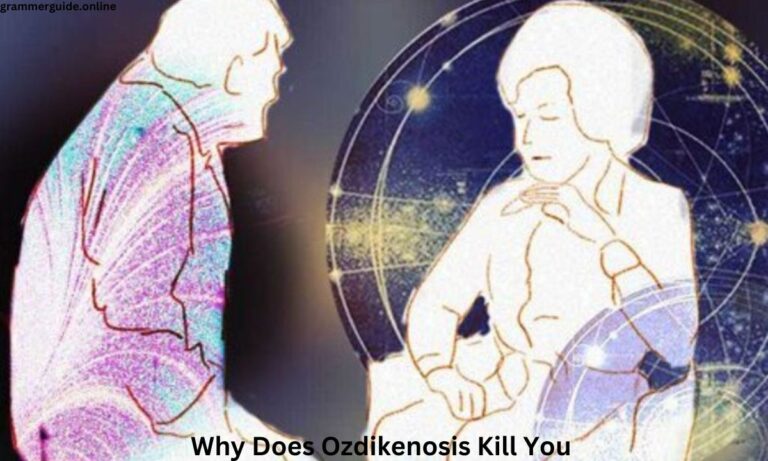Ozdikenosis kills through a devastating multi-system attack on the body. It triggers a massive immune overreaction called a cytokine storm. The disease disrupts energy production at the cellular level.
It damages the brain by crossing the blood-brain barrier. Vital organs fail simultaneously as the body’s regulatory systems collapse. The pathogen evades detection during early stages, allowing extensive damage before symptoms appear.
By the time diagnosis occurs, the cascading failures often prove impossible to reverse with current medical interventions.
The Origins and Epidemiology of Ozdikenosis
Epidemiologically, ozdikenosis presents a unique pattern unlike many infectious diseases with clear transmission vectors. The condition demonstrates both genetic predisposition factors and environmental triggers that scientists are still working to fully understand.
Research suggests certain genetic markers may increase susceptibility by up to 70% in some populations.
The disease first emerged in isolated clusters before spreading through global travel networks. Initial cases were often misdiagnosed due to symptom overlap with more common conditions.
Current epidemiological data indicates an infection rate that varies significantly by region, with urban centers showing higher prevalence compared to rural areas.
Immunological Dysregulation and Cytokine Storm
Recent research has illuminated the significant role of immunological dysfunction in ozdikenosis mortality. The cellular stress and damage patterns associated with the condition trigger abnormal immune responses that contribute substantially to fatal outcomes.
This hyperactive immune response becomes self-perpetuating as damaged tissues release additional inflammatory signals.
The cytokine storm typically begins 3-5 days after initial symptom onset. Patients exhibit elevated levels of interleukins, particularly IL-6 and TNF-alpha, at concentrations up to 200 times normal baseline values.
This massive inflammatory cascade damages blood vessels throughout the body, leading to widespread microvascular injury and subsequent multi-organ dysfunction.
Lipid Processing and Ketone Utilization
With glucose metabolism impaired, the body attempts to shift toward lipid utilization as an alternative energy source. However, ozdikenosis also compromises β-oxidation pathways and ketone body metabolism.
This metabolic double-bind leaves cells starved for energy despite potential substrate availability.
The disruption to lipid processing creates toxic intermediary compounds that accumulate in tissues. Researchers have identified unusual fatty acid derivatives unique to ozdikenosis patients that appear to interfere with mitochondrial function.
These compounds concentrate particularly in neural tissue and cardiac muscle, explaining the prominent neurological and cardiovascular symptoms.
The Multi-System Nature of the Disease

Conventional medical approaches often target specific organ systems or discrete pathophysiological processes. Ozdikenosis simultaneously affects multiple systems through interrelated mechanisms.
This complexity means that addressing one aspect of the disease often proves insufficient to halt overall progression.
The disease targets the respiratory, cardiovascular, and neurological systems with particular virulence. Initial respiratory symptoms often mask the developing cardiovascular complications until they become critical.
Meanwhile, neurological deterioration proceeds sometimes without obvious external signs until significant damage has occurred, making early intervention challenging.
Pregnant Women
Ozdikenosis during pregnancy presents unique challenges, with evidence suggesting potential placental transmission.
Modified treatment regimens avoiding teratogenic antibiotics and close maternal-fetal monitoring are essential for managing these high-risk cases. Vertical transmission rates appear to vary based on the stage of pregnancy at infection.
The maternal immune response to ozdikenosis may be altered by pregnancy-related immunological changes. Studies indicate pregnant women experience a delayed but ultimately more severe cytokine storm compared to non-pregnant patients.
This altered timeline creates a false impression of milder disease before rapid deterioration occurs, complicating treatment decisions.
Read This Blog: Dowsstrike2045 Python: Mastering Python’s Future Combat Algorithm
Public Health Measures
Effective containment requires comprehensive surveillance systems for early detection through monitoring networks. Community screening programs have proven effective in regions with established healthcare infrastructure.
These early warning systems allow for rapid isolation of potential cases before widespread transmission occurs.
Contact tracing remains crucial in identifying and following up with individuals exposed to confirmed cases. Digital tracking methods have improved efficiency, though privacy concerns persist.
Implementation of quarantine protocols for isolating confirmed cases and high-risk contacts has shown variable effectiveness depending on community adherence and support services.
The Perfect Storm: How Ozdikenosis Orchestrates Multiple System Failure
The lethality of ozdikenosis lies primarily in its remarkable ability to simultaneously compromise multiple vital systems. Unlike diseases that target specific organs or pathways, ozdikenosis launches what amounts to a coordinated attack on the body’s core regulatory mechanisms.
The initial infection establishes rapidly before symptoms become apparent, allowing extensive damage to occur before intervention begins.
What makes ozdikenosis particularly insidious is its ability to evade immune detection during early stages. The pathogen’s molecular mimicry mechanisms whereby its surface proteins resemble human cell components allow it to establish a robust infection before the immune system recognizes the threat.
By the time a robust immune response develops, the pathophysiological cascade is often already irreversible.
Frequently Asked Questions
How is ozdikenosis transmitted?
Transmission occurs primarily through respiratory droplets and contact with contaminated surfaces, with potential airborne transmission in poorly ventilated spaces.
What are the early warning signs?
Initial symptoms include unexplained fatigue, intermittent low-grade fever, and subtle cognitive changes that may be mistaken for stress or lack of sleep.
Can ozdikenosis be prevented with vaccines?
Current vaccine candidates show limited efficacy due to the pathogen’s rapid mutation rate, though research continues on polyvalent approaches.
Is ozdikenosis contagious before symptoms appear?
Evidence suggests pre-symptomatic transmission occurs in approximately 30% of cases, complicating containment efforts.
What treatments are currently available?
Treatment remains primarily supportive, focusing on managing symptoms while experimental therapies targeting specific pathways are under investigation.
Conclusion
The complex pathophysiology of ozdikenosis explains its high mortality rate despite modern medical intervention. The synchronous failure of multiple organ systems creates a clinical situation that rapidly exceeds the capacity of current supportive technologies.
Understanding these mechanisms is essential for developing targeted therapies that might interrupt the fatal cascade.
Future research directions focus on early detection methods and multi-modal treatment approaches. The complexity of ozdikenosis demands interdisciplinary collaboration between immunologists, neurologists, infectious disease specialists, and critical care experts.

Robert is a talented content writer and digital marketer with expertise in SEO, social media management, and online marketing.







